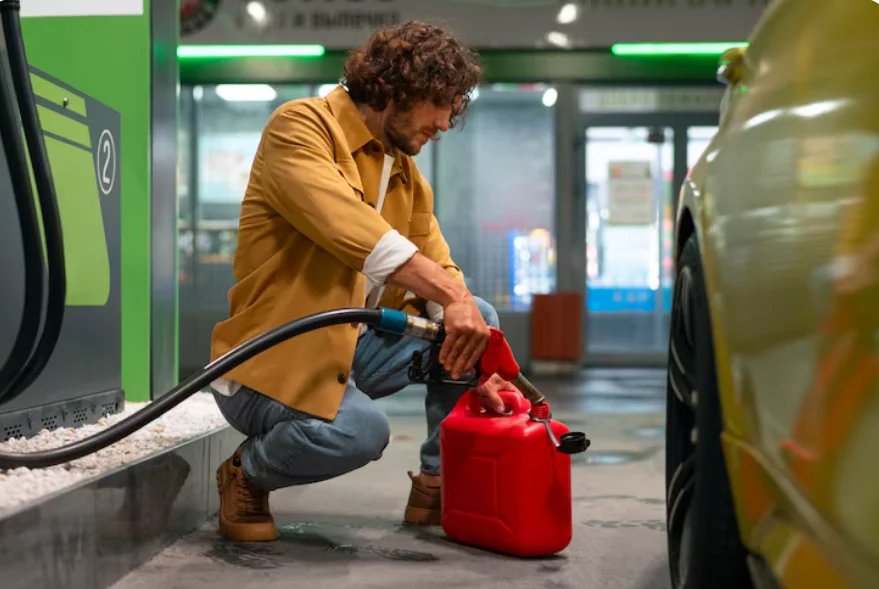Ultimate Guide to Auto Parts Casting: Methods and Materials Used

Introducing the Ultimate Guide to Casting Auto Parts! Here’s a comprehensive look at casting automotive parts— the age-old manufacturing technique that produces precision and durability in engine components and sleek body parts in your car. You’ll learn about the various methods and materials used in automotive casting, no matter if you are a car enthusiast or a professional. Fasten your seatbelts!
Different Methods of Casting Used in the Automotive Industry
High-quality casting automotive parts are manufactured using three primary methods: sand casting, die casting, and investment casting.
- One of the oldest and most widely used techniques is sand casting. It involves creating a mold made of sand mixed with a binding agent, which is then packed around a pattern of the desired part. Once the mold is ready, molten metal is poured into it and left to cool. Sand casting offers versatility in shape complexity and can be cost-effective for large-scale production.
- Die casting, on the other hand, utilizes reusable metal molds called dies to produce intricate parts with excellent dimensional accuracy. The process involves injecting molten metal under high pressure into these precision-made dies. Die casting offers faster production rates and tighter tolerances compared to sand casting.
- Investment casting takes an artistic approach by using wax patterns that are coated with ceramic material through multiple dipping processes. This creates a highly detailed mold capable of capturing even complex shapes with exceptional precision. Once dried and heated, the wax melts away leaving behind a cavity ready for molten metal to be poured in.
Each method has its strengths and limitations when it comes to producing auto parts efficiently while maintaining quality standards. From simple components like engine blocks or transmission housings to intricate turbocharger impellers or intake manifold runners – choosing the right method depends on factors like design complexity, required quantity, time constraints, budget considerations, and more! So whether you’re manufacturing sturdy chassis components or crafting delicate interior trims for luxurious vehicles – understanding these different methods of casting will help you make informed decisions when it comes to producing top-notch auto parts!
Materials Used in Auto Parts Casting
When it comes to auto parts casting, selecting materials is important for determining the performance and durability of the final product. Different materials possess unique properties that suit specific applications. Let’s closely examine some commonly used materials in casting automotive parts.
-
Aluminum
Aluminum, with its lightweight nature, excellent heat conductivity, and corrosion resistance, stands out as one of the most widely used materials. It finds ideal applications in components like engine blocks, cylinder heads, and intake manifolds.
-
Iron
Cast iron, offering high strength and wear resistance, emerges as an ideal choice for heavy-duty applications such as crankshafts, brake rotors, and suspension components.
-
Steel
Steel, renowned for its exceptional strength and toughness, proves suitable for critical parts like connecting rods, camshafts, and gears.
-
Magnesium
Magnesium alloys, known for their lightweight properties and good strength-to-weight ratio, typically find use in transmission cases or other non-load-bearing components.
-
Brass/Bronze
Brass or bronze alloys, chosen for their excellent corrosion resistance properties, see applications in various automotive parts, including bushings and bearings.
-
Titanium
Despite its relative cost, titanium is valued for its high strength-to-weight ratio and corrosion resistance.
Advantages and Disadvantages of Each Method and Material
Advantages and disadvantages are inherent in each casting method and material used in the automotive industry. Here’s a closer look:
Sand Casting
- Advantages: Cost-effective and versatile, allowing for the production of complex shapes.
- Disadvantages: This can lead to surface roughness and dimensional variability.
Die Casting
- Advantages: High production rates and excellent dimensional accuracy, yielding parts with smooth surfaces suitable for painting or plating.
- Disadvantages: Requires high upfront tooling costs.
Investment Casting
- Advantages: Allows for intricate designs with excellent surface finishes. Highly versatile, casting various materials including steel, aluminum, and superalloys.
- Disadvantages: Can be expensive for small-scale production runs.
Materials Used
- Steel: Provides strength but may lack corrosion resistance.
- Aluminum Alloys: Offer lighter weight but lower durability.
Each method and material serves different purposes within the casting automotive industry, depending on factors such as cost constraints or performance requirements. Understanding these advantages and disadvantages helps manufacturers make informed decisions when selecting the most appropriate method and material combination for their specific needs.
Case Studies: Successful Examples of Auto Parts Casting
Here are a few fictional but realistic case studies that highlight the successful application of various auto parts casting methods:
-
Optimizing Engine Performance with Sand Casting
- Challenge: A leading automotive company aimed to improve the efficiency of their engines.
- Solution: They employed sand casting for engine block production. Sand molds’ versatility allowed for intricate cooling channel designs, optimizing heat dissipation. This led to improved engine performance and fuel efficiency.
-
Precision Turbocharger Components through Investment Casting
- Challenge: A manufacturer sought to enhance the performance of their turbochargers.
- Solution: By utilizing investment casting with wax patterns and ceramic molds, they achieved precision in turbocharger housing production. This resulted in components with minimal material waste, high dimensional accuracy, and increased turbocharger efficiency.
-
Elevating Transmission Case Quality with Gravity Die Casting
- Challenge: A well-known car manufacturer aimed to enhance the durability of their transmissions.
- Solution: Gravity die casting was employed for transmission case production. This method provided superior surface finish and mechanical properties. Tight tolerances were achieved, reducing porosity levels and ensuring the reliable performance of the transmissions.
-
Innovative Lightweighting with Aluminum Alloy Die Casting
- Challenge: An automaker aimed to reduce vehicle weight for improved fuel efficiency.
- Solution: They embraced die casting with aluminum alloys for components like suspension parts and engine brackets. The lightweight nature of aluminum alloys contributed to overall vehicle light-weighting without compromising strength, leading to fuel-efficient and agile vehicles.
-
Revolutionizing Design with 3D Printed Sand Molds
- Challenge: A forward-thinking manufacturer wanted to accelerate prototyping and optimize part designs.
- Solution: By incorporating 3D printing technology for sand molds, they significantly reduced lead times in the design iteration process. This allowed for rapid prototyping and efficient design optimization, leading to quicker development cycles and improved final part designs.
These fictional case studies demonstrate how various casting methods can be strategically applied to address specific challenges in the automotive industry, showcasing the versatility and innovation within the auto parts casting sector.
Conclusion
In the ever-changing world of the casting automotive industry, auto parts casting serves as an important support system, ensuring precision, durability, and cost-effectiveness. This guide has explored a range of methods including sand casting, investment casting, and die casting. These techniques incorporate various materials such as lightweight aluminum alloys and strong steel to keep up with shifting industry trends.
By highlighting the economic benefits – especially the ability to reuse molds for mass production – this guide emphasizes advantages that extend to both manufacturers and consumers. As technology continues to advance with innovations like 3D printing and simulations, the future of auto parts casting looks promising for continuous improvement. To maintain high standards and deliver dependable vehicles, auto parts casting remains essential within the automotive manufacturing realm. It promises longevity, efficiency, and uncompromising quality in its relentless pursuit of excellence.

How Traffic Management Businesses Are Improving Field Accountability

How to Plan a Last-Minute Holiday Trip with Instant Loan Support

Turning Cash Flow Into Confidence

Pay Stub Templates You Can Use — Free and Easy to Customize

Holistic Advice for Someone Looking to Reduce Stress

How Regular Truck Servicing Can Effectively Address Common Truck Issues

Modern Cars Demand Modern Care: Why Traditional Methods Are Failing Chicago Drivers

In-Depth Analysis and Trend Insights of the Four Major Automotive Manufacturing Processes in 2025








